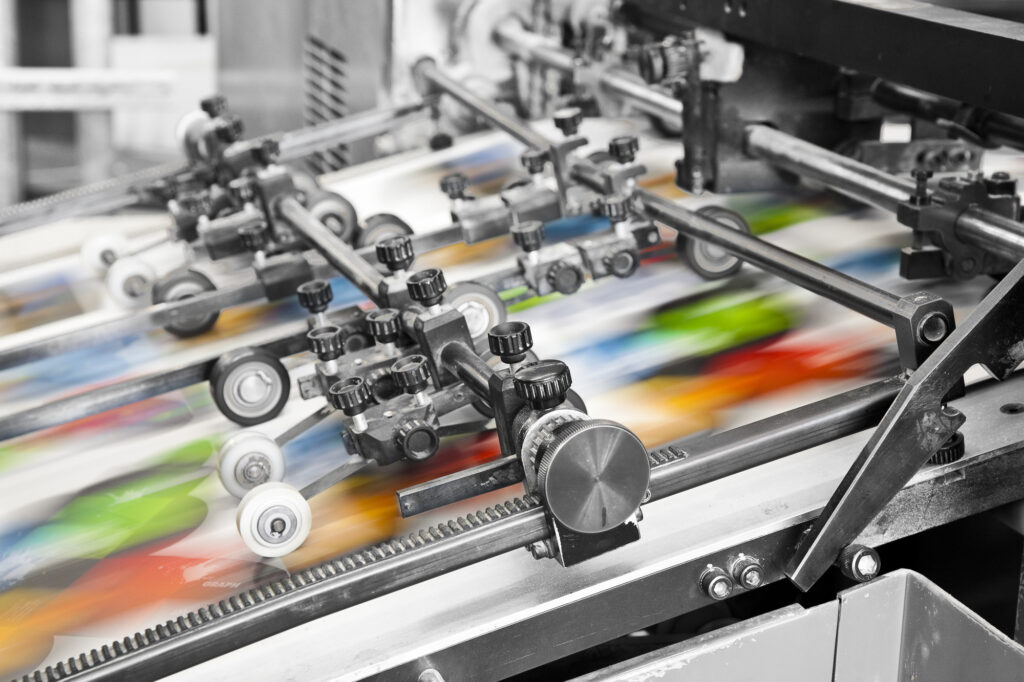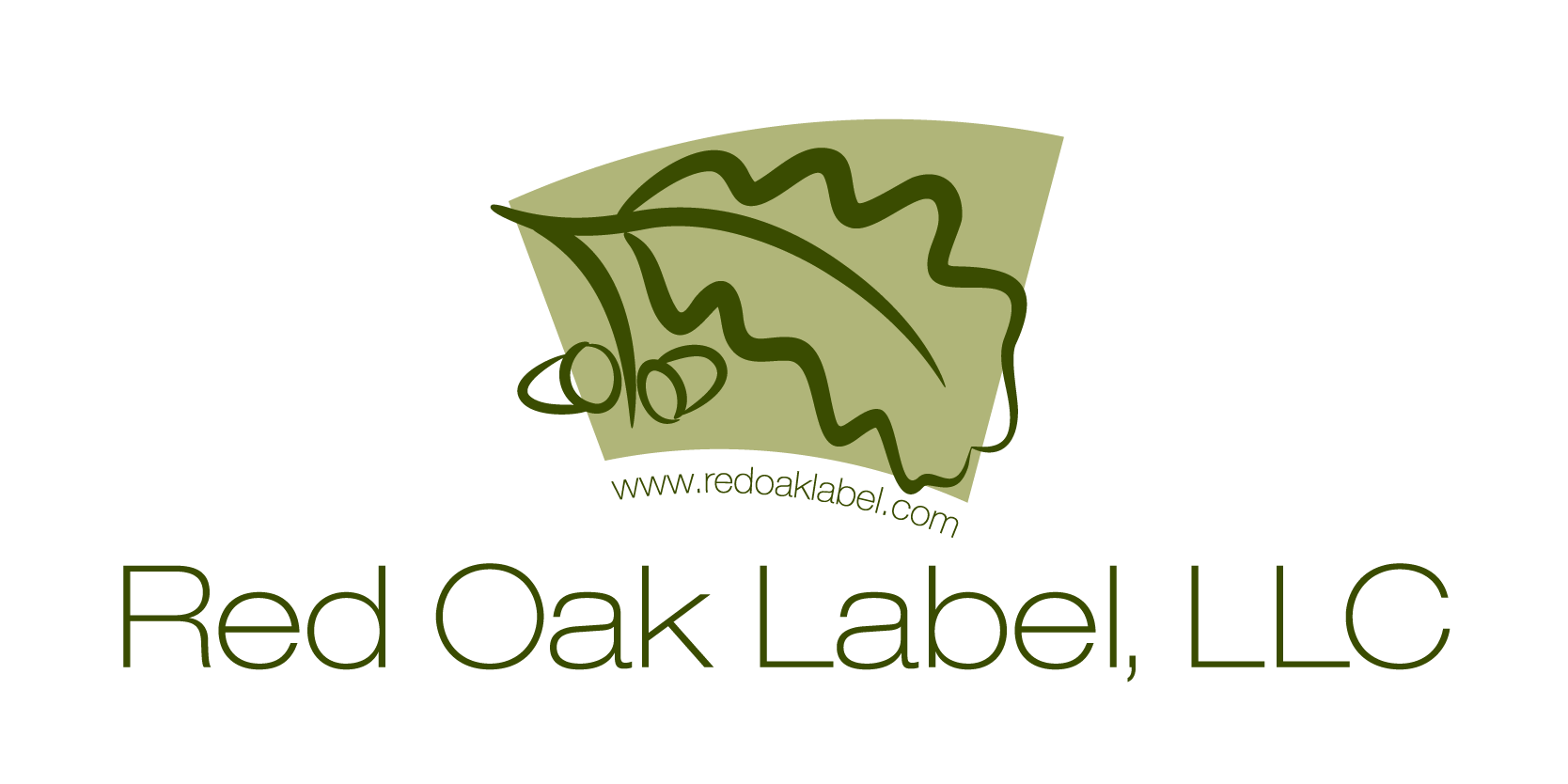
In the world of printing, choosing the proper method can significantly impact your project’s quality, cost, and turnaround time. Two popular printing methods are flexographic (flexo) printing and offset printing. Both have unique strengths and applications, but understanding their differences can help you decide which is best suited for your needs. Let’s dive into how each type of printing works, their typical uses, and when it might make sense to favor one over the other.
How Flexographic Printing Works
Flexographic printing, often referred to as flexo, is a versatile and efficient printing process that uses flexible relief plates. Here’s a step-by-step overview of how it works:
- Plate Creation: The process begins with creating a flexible printing plate, usually made of rubber or photopolymer. These plates are engraved with the image or text to be printed.
- Ink Application: The ink is transferred to the plate’s raised surface using an anilox roller, which is designed to apply a consistent layer of ink.
- Printing: The inked plate is pressed onto the substrate (the material being printed on) as it passes through the press. Flexo printing can handle a wide range of substrates, including paper, plastic, foil, and more.
- Drying: The printed material passes through a drying system, which quickly dries the ink, allowing for high-speed production.
Typical Uses of Flexographic Printing
Flexographic printing is favored for its speed, versatility, and ability to print on various substrates. Common applications include:
- Labels and Tags: Custom tags or labels, such as those used in food and beverage packaging.
- Packaging: Flexible packaging, corrugated boxes, and cartons.
- Newspapers and Magazines: High-volume printing on various types of paper.
How Offset Printing Works
Offset printing, also known as lithography, is a traditional method that involves transferring an inked image from a plate to a rubber blanket and then to the printing surface. Here’s how it works:
- Plate Creation: Metal plates are created with the desired image or text. These plates are treated so the ink adheres only to the image areas.
- Ink and Water Application: The plate is dampened with water, which repels the oil-based ink. The ink is then applied to the plate, sticking only to the image areas.
- Transfer to Blanket: The inked image is transferred from the plate to a rubber blanket, which provides a smoother and more flexible surface for printing.
- Printing: The image on the rubber blanket is then transferred to the substrate, usually paper.
Typical Uses of Offset Printing
Offset printing is known for its high-quality output and is typically used for:
- Books and Magazines: Detailed images and text on various paper types.
- Brochures and Flyers: High-quality marketing materials.
- Stationery: Professional letterheads, business cards, and envelopes.
Flexographic vs. Offset Printing: Key Differences
- Substrate Versatility: Flexo printing can print on a wide range of substrates, including non-porous materials like plastic and foil, making it ideal for packaging and labels. Offset printing is typically limited to paper and some paperboard.
- Production Speed: Flexo printing is generally faster than offset printing due to its ability to dry ink quickly, making it suitable for high-volume runs.
- Print Quality: Offset printing usually offers higher print quality, particularly for detailed images and fine text, due to its ability to produce precise and consistent impressions.
- Setup Costs: Due to the plate creation process, offset printing has higher initial setup costs, making it more cost-effective for larger runs. Flexo printing, with its faster setup and ability to handle short runs efficiently, can be more economical for smaller batches.
- Environmental Impact: Flexo printing often uses water-based inks, which can be more environmentally friendly compared to the oil-based inks used in offset printing.
When to Use Flexographic Printing
Flexographic printing is the best choice when you need:
- High-speed production for large volumes.
- Versatility in substrate materials.
- Cost-effective solutions for both short and long runs.
- Environmentally friendly printing options.
When to Use Offset Printing
Offset printing is ideal when you require:
- High-quality, detailed images and text.
- Large print runs where setup costs are spread out.
- Printing primarily on paper-based substrates.
Choosing the right printing method is crucial for achieving your desired results and meeting your business goals. Both flexographic and offset printing have their unique advantages and are suitable for different applications. Flexo printing shines in its speed, versatility, and efficiency, making it a top choice for packaging, labels, and high-volume printing on various substrates. Offset printing is ideal for detailed images and text on paper-based products.
Get a Custom Printing Quote
At Red Oak Label, we specialize in flexographic printing to provide high-quality, cost-effective, and sustainable solutions for your labeling and packaging needs. Contact us today to learn more about how flexographic printing can benefit your business or request a quote for your next project.
